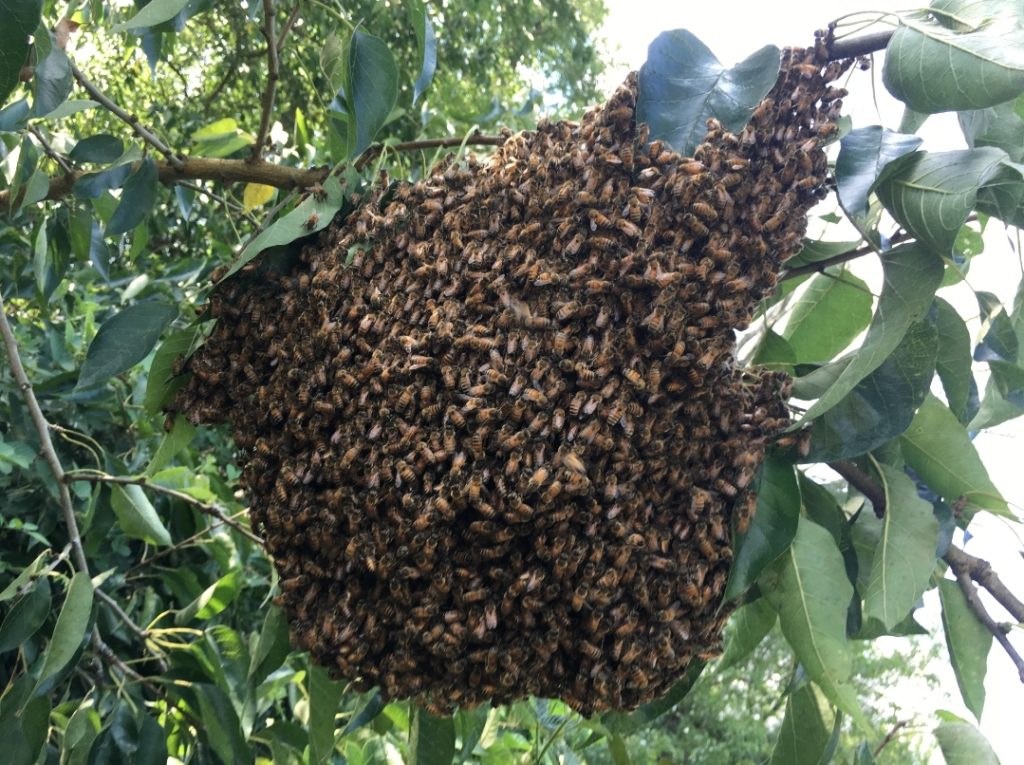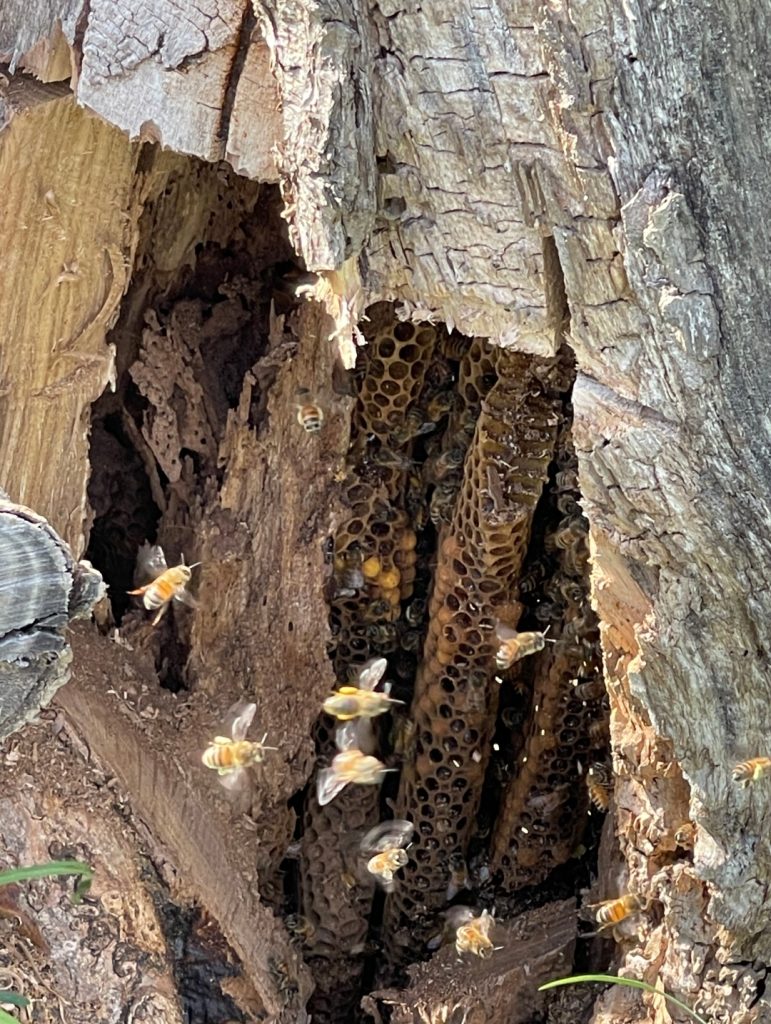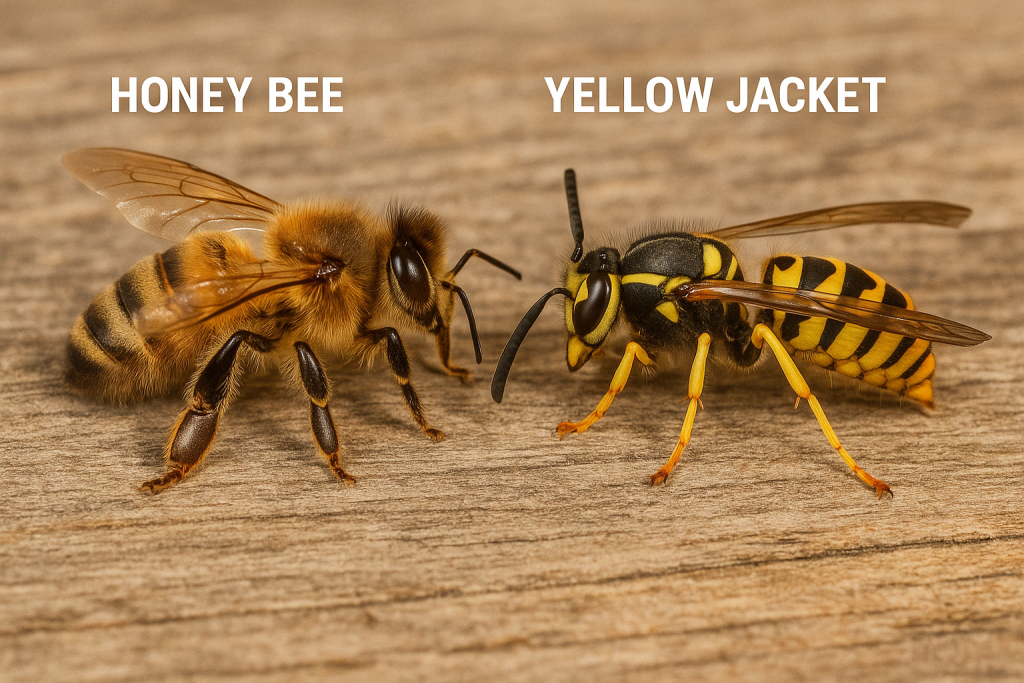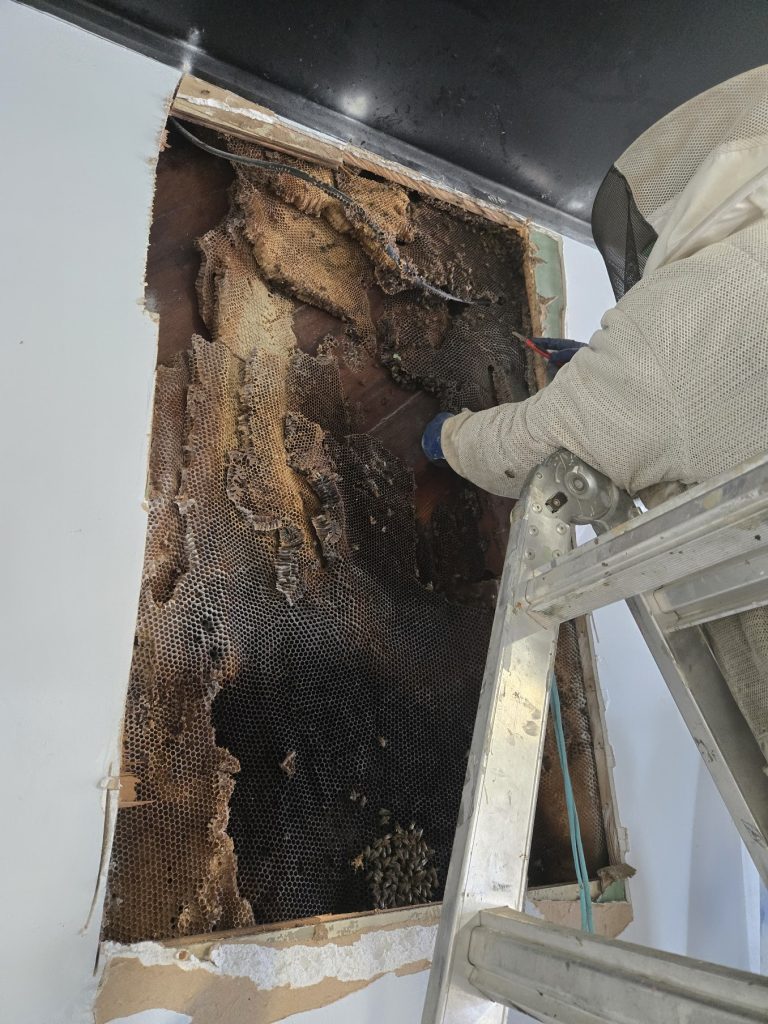Swarms
Information about reporting and relocating bee swarms.
A collection of information about honey bee swarms for both beekeepers and people who have a swarm on their property and need to know how to relocate them.

If you need a swarm removed in Louisville, Kentucky or the surrounding areas you can contact Apis Rescue Swarm Removal Team.
(502) 233-2145 or Swarm@apisrescue.org
What is a Honey Bee Swarm?
Honey bee swarms are a natural and fascinating phenomenon that occurs when a colony of bees decides to reproduce by creating a new colony. The process of swarming is crucial for the survival of honey bee populations and ensures the continued success of their genetics. If you’ve ever heard the buzzing sound of bees or witnessed a very large group of them swirling through the air, you’ve likely seen a swarm in action.
Swarms typically happen during the warmer months, with the spring season being the most common time for swarming to occur. In Oldham County, Kentucky, for example, the swarm season often begins in April, though it can start earlier in areas with milder winters. Swarming is the bees’ way of expanding their population and finding a new home to settle in.
Swarming behavior can be a bit alarming to some people, as the sight of thousands of bees in a large cluster can seem intense. However, honey bee swarms are typically docile, as they are not yet defending a new home. The bees are focused on finding a new nesting site, and they are not likely to sting unless provoked. It’s important to understand that a swarm is a temporary state, and once the bees find a suitable home, they will settle down and begin building their new hive.

How Long Will Honey Bee Swarms Be There?

The duration of a honey bee swarm’s stay at a temporary location, such as a tree branch or fence post, can vary depending on the weather and the availability of a suitable home. Typically, bees will stay in one location for a few hours to a couple of days before they move on to their permanent home. During this time, the bees will cluster together and wait for the scout bees to return with news of a suitable place for their new hive.
If the weather is favorable, the bees may leave within a few hours after finding a new home. If it is rainy or cool, they may remain in place longer, sometimes for several days. The bees may also stay put longer if they are unsuccessful in finding a suitable location. In rare cases, bees may fail to find a new home and settle in an open-air hive, where they continue to live in their temporary resting spot. You can tell if they have established their new home because they will start building honeycomb. If you see that, then you know they are there to stay.
It is important to note that swarms are generally harmless during this swarming period. The bees are focused on finding a new home, and they will typically not pose a threat unless disturbed. If you encounter a swarm, it’s best to call a local beekeeper or contact the Apis Rescue Swarm Removal Team, as they can safely remove the bees and relocate them to a more permanent home.
The Difference Between Ground Bees and Honey Bees
Ground bees, also known as yellow jackets, are often mistaken for honey bee swarms due to their behavior and appearance. However, they are entirely different creatures with distinct life cycles and behaviors. While honey bees are social insects that live in hives and swarm to reproduce, ground bees are typically solitary or live in underground nests. Ground bees are often active in the fall and nest in the ground, where they build small colonies with a single queen. Unlike honey bees, ground bees do not swarm or engage in the same reproductive behaviors.
One key difference between honey bees and ground bees is the way they reproduce. Honey bees rely on swarming as a way to create new colonies, whereas ground bees do not have this type of reproduction. Instead, they establish nests in the ground, often in sandy or disturbed areas, where they live out their life cycle. When you see a cluster of bees hovering around the ground, it’s often ground bees or yellow jackets, which can be aggressive, especially in late summer and fall.
In summary, honey bees and ground bees are distinct species with different behaviors, and understanding the difference is important when dealing with them. Honey bee swarms are a natural part of their reproductive process and can be safely relocated by beekeepers, while ground bees require a different approach if removal is necessary.

When Bees Can’t Be Removed by a Beekeeper

Beekeepers are skilled at handling honey bee swarms, but there are certain situations where they may not be able to help with bee removal, particularly when the bees are located in difficult-to-reach areas like inside walls or the ground.
If bees are inside your house, such as within walls, attics, or other hidden spaces, beekeepers may not be able to remove them easily. Honey bees require access to the hive to safely relocate them, but when they are inside a structure, it often involves complex and invasive procedures to reach them. Removing bees from inside walls may require cutting into the structure, which can be costly and disruptive to your home. Additionally, if the bees have built an extensive honeycomb, it can attract other pests and cause damage to your property. In these cases, a professional pest control service specializing in structural bee removal might be necessary, as beekeepers typically focus on working with swarms in open, accessible locations.
Ground bees, such as yellow jackets, present an entirely different challenge. These bees nest in the ground, and their colonies can be difficult to locate, often hidden beneath the surface. Beekeepers are trained to handle honey bee colonies, which are organized in hives and swarms, but ground bees are more aggressive and live in a very different social structure. Because they nest in the soil and can swarm if disturbed, beekeepers are not equipped to safely remove them. Pest control experts are usually needed to deal with ground bee nests, as they have the tools and techniques to address this kind of issue without causing harm to people or pets.
In short, while beekeepers and the Apis Rescue Swarm Hotline are the go-to solution for honey bee swarms in open locations, removal from houses or ground bees requires the expertise of pest control professionals.
If you would like more information about honey bee swarms we have an enlightening article about swarming on our blog.
